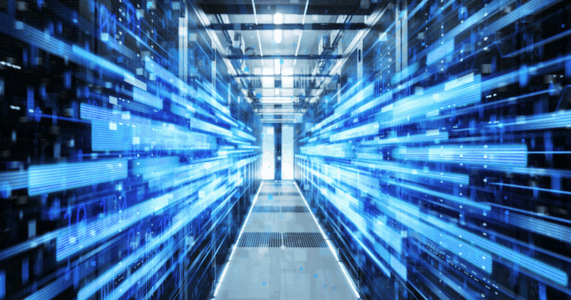By Rebecca Gilstrap
The COVID-19 pandemic has created the concept of “America 2.0.” Forced social distancing has brought about a fundamental change in every aspect of our lives. Playing a pivotal role within the formation of the “new normal” will be technology including the Internet of Things (IoT) and the underlying mission critical infrastructure that supports it.

The frequency of discussions regarding the dependency on technology infrastructure is rapidly intensifying, and IoT is front and center. According to MarketsAndMarkets, the global impact of COVID-19 on the IoT market size is expected to grow from USD 150 billion in 2019 to USD 243 billion by 2021, at a Compound Annual Growth Rate (CAGR) of 13.7% during the forecast period. Minimizing human contact using remote monitoring and control has enabled guardians of critical physical assets to work from home.
If IoT connectivity is an enabler to a successful America 2.0 transition, then certainly automation is the enabler’s engine that will gather and funnel the information over a 5G, WiFi, LoRaWAN, NB-IoT ,and alternate backbone, connecting localized compute to a highly resilient hybrid data center architecture. Already, companies such as Vesseltracker and Geotab are gathering data on cruise ship and transportation activities respectively, and as early as January 30th of this year, XAG Co. Ltd. and Huawei converted 2,600 smart robots and drones into disinfectant sprayers.
SmartCities Get a Health Check-Up
Pre COVID-19, IoT services have set up shop in our nation’s urban environments to create SmartCity traffic management, oil, parking, and water monitoring; now we can add one more IoT application — health surveillance. Network World reports that Kinsa is leveraging IoT to create a network of connected thermometers to collect anonymous health data with the hopes of revealing insights into COVID-19 as well as future pandemics. In addition, SmartCitiesWorld spotlights the Boston Department of Innovation and Technology’s Citywide Analytics Team and their dashboards that allow residents to track the number of coronavirus cases in the city and throughout Massachusetts.
Levering IoT to connect more things together, in an attempt to distill actionable outcomes out of an enormous amount of data needed to mitigate the impact of future pandemics, seems like an obvious choice. “Creativity is just connecting things. When you ask creative people how they did something, they feel a little guilty because they didn’t really do it, they just saw something. It seemed obvious to them after a while,” said Apple’s Steve Jobs.
In America 2.0, Steve Jobs’ quote rings true, IoT services are an obvious SmartCity solution for health surveillance. As posted online by Technology Networks, MIT used aggregated mobile phone data to trace, in granular details of short distances and periods, the spread of dengue virus in Singapore during 2013 and 2014. According to the article, MIT overlayed a Geographic Information System (GIS) on IoT mobile data from infected patients, to assist epidemiologists and help identify all the persons who have come into contact with infected patients. And because companies such as Senet have already deployed a massive LoRaWAN-based network across the U.S., scaling IoT to include other services such as food truck monitoring and cold storage for restaurants and healthcare can be rolled out very quickly.
Cloud; COVID Antidote?
Pre COVID-19, data center architectures were emerging through the cloud, edge, and on premise to optimize application performance and service delivery. Post pandemic will be more concerned with data creation, consumption, and distributing capabilities closer to the point of data origin, all while keeping business continuity in mind. This is especially true in healthcare as IoT services will have increasing demands for low latency data transfer. For example, there will be an increased use of wireless remote temperature monitoring for vaccine refrigerators to ensure medicine does not spoil and IoT sensors tracking the location of medical equipment such as defibrillators, nebulizers, and oxygen pumps.
Edge data centers sit between the core data center and data creation, tucked away close to, if not at the point-of-data origination. For widely dispersed edge networks to reliably operate, they need continuous power and connectivity with the ability to be remotely managed — facility management, IT managers, and operations managers do not want to make urgent house calls to cell tower sites, building basements, or rooftops 24/7. Being able to remotely reboot and power-up malfunctioning devices by using Switched Rack PDUs will help mitigate the need to dispatch personnel to the corners of the network for investigation.
New IoT workloads and more edge computing locations will impact facility design and operations decisions, especially regarding power sources. Additional consideration must be given to the power distribution architecture (480V/415V/208V to the rack), power density (5/10/20/50kW per rack), cooling (air, liquid, immersion, containment), and rack size (42U/48U/52U/etc.)
For example, edge computing will require a mix of DC and AC-powered equipment, located at various cell towers and cable TV hut locations. The most commonly used DC power is -48V DC employed by the telecommunications companies. The most commonly used AC power in the U.S. is either 120V or 208V single-phase AC. At the cell tower location, there may be AC power from the local electric utility, AC power from an on-site diesel-powered generator, DC power from battery banks or DC power from solar cells.
Choosing suppliers, who can bring together racks, PDUs, cable management, cabling, and containment, will enable facility management to make quick decisions on how to properly equip edge infrastructure needs and avoid buying inadequate support infrastructure for new workloads. Fitting edge data centers to accommodate changing hardware and application requirements comes with pitfalls such as CPU upgrades that require replacement as well as new power supplies, fans, and network adapters. Technicians are often slowed by this additional requisition, deployment, validation, and provisioning process when the hardware is inadequate — avoiding it can make good sense. Also, to mitigate this risk, the use of Build-Your-Own-PDUs allows facility managers to choose the PDU form factor, input voltage, input amperage, outlet count, outlet type, feature set, and PDU color banding for a configure-to-order (CTO) product; this flexibility promotes better scalability.
COVID Commonalities
One of the common denominators — and a bright spot — in this new pandemic-strained society is cloud technology. It has proven to be a ubiquitous, social distancing overlay that removes the isolation, to combine the at-home workforce with one another and keep a stream of progress flowing. In the post-pandemic era, the cloud will continue to propagate data through the means of IoT sensors and gateways to help sound the alarm of potential virus flare-ups and keep crowd control in check.
To help ensure the future America 2.0 promise of IoT dividends, today, facility and IT infrastructure designers must put risk mitigating technologies commonly found in core data centers into edge data centers. This includes devices such as Intelligent PDUs that allow you to configure notifications and establish thresholds to provide automated alert updates on the power and environmental conditions within these remote locations — that could result in downtime if not reacted to quickly. Reliability and uptime is a two-way street, and infrastructure owners and operators must also use the data, remote monitoring, management, and control to make decisions in optimizing and improving resiliency and scalability.
The corporate and social rhythm of America 2.0 will have cautious undertones of “safety” as we roll out the new normal. Cloud, IoT, and edge computing will be the hidden utility that automates house calls to check and monitor our well-being and the enabling technology infrastructure. Ensuring the success of these virtual house-calls will be the IT/OT responsibility — without their best practices, the flow of vital information stops, and the resiliency needed for America 2.0 will be in jeopardy.
 Gilstrap is director of strategy for Legrand’s Data, Power and Control Division. She has spent the last decade ardently optimizing data centers and mitigating IT infrastructure outages. With a career rooted in security compliance and business continuity, she has worked across organizational boundaries to highlight critical IT dependencies. Gilstrap has managed international technology divestiture projects, built colocation businesses from the ground up, and created multi-tenant cloud service platforms. She has a passion for high performance buildings and utilizing technology to create better experiences and maximized ROIs. Gilstrap has held DOD clearance as well as Sensitive Compartmented Information Access. She holds a B.A. from the University of South Carolina.
Gilstrap is director of strategy for Legrand’s Data, Power and Control Division. She has spent the last decade ardently optimizing data centers and mitigating IT infrastructure outages. With a career rooted in security compliance and business continuity, she has worked across organizational boundaries to highlight critical IT dependencies. Gilstrap has managed international technology divestiture projects, built colocation businesses from the ground up, and created multi-tenant cloud service platforms. She has a passion for high performance buildings and utilizing technology to create better experiences and maximized ROIs. Gilstrap has held DOD clearance as well as Sensitive Compartmented Information Access. She holds a B.A. from the University of South Carolina.
Want to read more about data center facilities?
Check out all the latest news related to data centers and facility management.

















![[VIDEO] Collect Asset Data at the Speed of Walking a Building](https://facilityexecutive.com/wp-content/uploads/2024/02/maxresdefault-324x160.jpg)